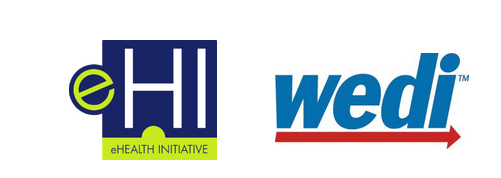Topic intro description here. Limited to 145 characters. Topic intro description here. Limited to 145 characters. Topic intro description here.
Report: The State of Patient Matching in America Survey
The State of Patient Matching in America Survey Report
Patient matching and identification remain a top priority when it comes to lowering costs, enhancing clinical decision-making, improving patient safety and fostering care coordination— all critical components of value-based care. The purpose of this survey is to provide an upto-date assessment of the patient matching challenges and opportunities both providers and HIEs face, as well as their attitudes toward possible patient identification solutions
The full report can be downloaded below.
Webinar Presentation: The State of Patient Matching in America
Correctly linking patient data across EHR systems remains a significant challenge for health systems, hospitals, offices, and any facility where patients receive care. Health Information Exchanges (HIE) also face challenges with patient matching. Duplicate or mismatched records result in privacy and safety risks, claim denials, redundant medical tests and procedures, and analytical reporting errors.
Presenter:
Vince Vitali
Vice President of Strategy, Nextgate
Vincent Vitali is a veteran healthcare IT leader with more than three decades of experience driving digital transformation as part of a passion to improve  clinical, financial and operational efficiencies. He joined NextGate in September 2019 as Vice President of Strategy and Business Development to identify growth opportunities, increase market penetration, forecast trends and foster relationships with industry stakeholders. Vitali has dedicated his career to the advancement of healthcare IT, specializing in application integration, business intelligence (BI) and analytics, and population health management. Before joining NextGate, he was the Vice President and Chief Information Officer at Norwegian American Hospital in Chicago. Prior to joining Norwegian in 2018, he spent three years as CIO at RML Specialty Hospital, three years at Chicago’s LaRabida Children’s Hospital, and three years as Vice President and CIO at BroMenn Healthcare in Normal, IL.
clinical, financial and operational efficiencies. He joined NextGate in September 2019 as Vice President of Strategy and Business Development to identify growth opportunities, increase market penetration, forecast trends and foster relationships with industry stakeholders. Vitali has dedicated his career to the advancement of healthcare IT, specializing in application integration, business intelligence (BI) and analytics, and population health management. Before joining NextGate, he was the Vice President and Chief Information Officer at Norwegian American Hospital in Chicago. Prior to joining Norwegian in 2018, he spent three years as CIO at RML Specialty Hospital, three years at Chicago’s LaRabida Children’s Hospital, and three years as Vice President and CIO at BroMenn Healthcare in Normal, IL.
Dr. Shaun Grannis
Vice President for Data and Analytics at the Regenstrief Institute
 Dr. Shaun Grannis, MD, MS, FAAFP, FACMI is Vice President for Data and Analytics at the Regenstrief Institute, Professor of Family Medicine, and holds the Sam Regenstrief Chair for Biomedical Informatics at the Indiana University School of Medicine. He has provided technical and policy guidance to many organizations including the Department of Health and Human Service’s National Committee for Vital and Health Statistics (NCVHS), the World Health Organization, UNAIDS, the Pew Charitable Trusts and the Centers for Disease Control. Globally, Dr. Grannis collaborates with several developing countries to guide country-wide Health IT architecture, including establishing Rwanda’s first HIE-related MPI. His recent analyses in conjunction with the Pew Charitable Trusts showed that standardizing matching variables demonstrably improves matching accuracy. In addition to identity management, Dr. Grannis’ current work focuses on applying machine learning, natural language (NLP), and phenotyping methods to improve discovery, decision making, case identification and population health measurements.
Dr. Shaun Grannis, MD, MS, FAAFP, FACMI is Vice President for Data and Analytics at the Regenstrief Institute, Professor of Family Medicine, and holds the Sam Regenstrief Chair for Biomedical Informatics at the Indiana University School of Medicine. He has provided technical and policy guidance to many organizations including the Department of Health and Human Service’s National Committee for Vital and Health Statistics (NCVHS), the World Health Organization, UNAIDS, the Pew Charitable Trusts and the Centers for Disease Control. Globally, Dr. Grannis collaborates with several developing countries to guide country-wide Health IT architecture, including establishing Rwanda’s first HIE-related MPI. His recent analyses in conjunction with the Pew Charitable Trusts showed that standardizing matching variables demonstrably improves matching accuracy. In addition to identity management, Dr. Grannis’ current work focuses on applying machine learning, natural language (NLP), and phenotyping methods to improve discovery, decision making, case identification and population health measurements.
Join eHI as our webinar panelists discuss our 2019 national survey, The State of Patient Matching in America. We will dive into:
• The biggest contributors to duplicate medical records
• The biggest barriers to improving patient matching rates
• How potential mismatches are addressed
• The government's role in patient matching
The value of healthcare data: to nudge, or not?
The value of healthcare data: to nudge, or not?
The processes of datafication, digitization and automation of healthcare and medicine are making new types and data available for analysis, and at greater volume. While the newly available data is often hailed as a solution to various problems in healthcare, there is only little discussion about who the use of such data empowers and who bears the costs. The use of healthcare data for “nudging”–e.g. to get patients to adopt healthier lifestyles–is a case in point: While such interventions are presumed to be cheap and effective, I argue that their value is a priori unclear. Both because of its assumed value-freeness, and because of its focus on individual behaviour, nudging draws attention away from the societal, political and economic factors that shape human practice. I conclude with a call upon policy makers to facilitate the use of healthcare data to build better institutions and to address social determinants of health before they seek to “fix” individual behaviour through nudging.
The full article can be viewed at this link.
AI, 5G, and IoT can help deliver the promise of precision medicine
AI, 5G, and IoT can help deliver the promise of precision medicine
When my son was a toddler, he went to his pediatrician for a routine CAT scan. Easy stuff. Just a little shot to subdue him for a few minutes. He’d be awake and finished in a jiffy.
Except my son didn’t wake up. He lay there on the clinic table, unresponsive, his vitals slowly falling. The clinic had no ability to diagnose his condition. Five minutes later, he was in the back of an ambulance. My wife and I were powerless to do anything but look on, frantic with worry for our boy’s life.
It turned out that he’d had a bad reaction to a common hydrochloride sedative. Once that was figured out, doctors quickly brought him back around, and he was fine.
But what if, through groundbreaking mixtures of compute, database, and AI technologies, a quick round of analyses on his blood and genome could have revealed his potential for such a reaction before it became a critical issue?
The full VentureBeat article can be viewed at this link.
SDOH 2.4.2020 Presentation Slides 6-9
Presentations 6-9 from SDOH Event are attached below:
SDOH 2.4.2020 Presentation Slides 1-5
Presentations 1-5 from SDOH Event are attached below:
Precision Psychiatry Applications with Pharmacogenomics: Artificial Intelligence and Machine Learning Approaches
Precision Psychiatry Applications with Pharmacogenomics: Artificial Intelligence and Machine Learning Approaches
A growing body of evidence now suggests that precision psychiatry, an interdisciplinary field of psychiatry, precision medicine, and pharmacogenomics, serves as an indispensable foundation of medical practices by offering the accurate medication with the accurate dose at the accurate time to patients with psychiatric disorders. In light of the latest advancements in artificial intelligence and machine learning techniques, numerous biomarkers and genetic loci associated with psychiatric diseases and relevant treatments are being discovered in precision psychiatry research by employing neuroimaging and multi-omics. In this review, we focus on the latest developments for precision psychiatry research using artificial intelligence and machine learning approaches, such as deep learning and neural network algorithms, together with multi-omics and neuroimaging data. Firstly, we review precision psychiatry and pharmacogenomics studies that leverage various artificial intelligence and machine learning techniques to assess treatment prediction, prognosis prediction, diagnosis prediction, and the detection of potential biomarkers. In addition, we describe potential biomarkers and genetic loci that have been discovered to be associated with psychiatric diseases and relevant treatments. Moreover, we outline the limitations in regard to the previous precision psychiatry and pharmacogenomics studies. Finally, we present a discussion of directions and challenges for future research.
The full article can be downloaded below.
ZIP Code v. Genetic Code: How Health Plans Can Use Technology to Address the Social Determinants of Health
ZIP Code v. Genetic Code: How Health Plans Can Use Technology to Address the Social Determinants of Health
When it comes to the state of our health in the U.S., the playing field is anything but level.
Study after study has shown that life circumstances, such as access to adequate food, education and healthcare, have a bigger impact on our health than our genetic makeup.
In other words, our healthcare destiny may depend more on our ZIP code than our genetic code.
The full Surescripts article can be viewed at this link.
Artificial Intelligence Is Not Ready For The Intricacies Of Radiology
Artificial Intelligence Is Not Ready For The Intricacies Of Radiology
Radiology is one of the most essential fields in clinical medicine. Experts in this field are specialists in deciphering and diagnosing disease based on various imaging modalities, ranging from ultrasound, magnetic resonance imaging (MRI), computerized tomography (CT), and x-rays. Studies have shown that the use of radiology in clinical practice has exponentially grown over the years: at the Mayo Clinic, between the years 1999 to 2010, use of CT scans increased by 68%, MRI use increased by 85%, and overall use of imaging modalities for diagnostic purposes increased by 75%, all numbers that have likely continued to rise, and indicate the sheer demand and growth of this robust field.
A unique proposal that has become prominent over the last few years to help alleviate this increased demand is the introduction of artificial intelligence (AI) technology into this field. Simply put, the premise of AI as an addition to the practice of radiology is straightforward, and has been envisioned in two main ways: 1) a system that can be programmed with pre-defined criteria and algorithms by expert radiologists, which can then be applied to new, straightforward clinical situations, or 2) deep learning methods, where the AI system relies on complex machine learning and uses neural-type networks to learn patterns via large volumes of data and previous encounters; this can then be used to interpret even the most complicated and abstract images.
However, while much of the theoretical basis for AI in the practice of radiology is extremely exciting, the reality is that the field has not yet fully embraced it. The most significant issue is that the technology simply isn’t ready, as many of the existing systems have not yet been matured to compute and manage larger data sets or work in more general practice and patient settings, and thus, are not able to perform as promised. Other issues exist on the ethical aspects of AI. Given the sheer volume of data required to both train and perfect these systems, as well as the immense data collection that these systems will engage in once fully mainstream, key stakeholders are raising fair concerns and the call for strict ethical standards to be put into place, simultaneous to the technological development of these systems.
The full Forbes article can be viewed at this link.
SDOH Meeting: 2.4.2020

Attached at the bottom are the presenter biographies for the Working with Government to Advance Social Determinants of Health (SDOH) event.
Agenda:
8:30 – 8:45 am : Welcome and Introductions
- Jennifer Covich Bordenick, CEO, eHealth Initiative and Foundation
- Charles Stellar, CEO, WEDI
8:45 – 9:15 am : Ethical Use of SDOH
- Jennifer Covich Bordenick, CEO, eHealth Initiative and Foundation
9:15 – 9:45 am : SDOH – A Transformative Factor in U.S. Healthcare
- Matt Eyles, President and CEO, AHIP
9:45 – 10:30 am : Leveraging Collaborations To Standardize SDOH Data Collection And Use
- Nancy Johnson, RN, PHD, CEO for El Rio Community Health Center, Tucson, Arizona
- Sheila Shapiro, Senior Vice President, National Strategic Partnerships, UnitedHealthcare Care Modernization & Innovation
10:30 – 10:45 am : BREAK
10:45 – 11:30 am : Federal SDOH Initiatives – Addressing SDOH in The Healthcare System
Facilitated by Edward Garcia, Senior Vice President, Healthsperien
- Erin Iturriaga, Program Officer and Clinical Trials Specialist, NHLBI Division of Cardiovascular Sciences
- Jordan Luke, Director, Program Alignment and Partner Engagement Group, Office of Minority Health, CMS
11:30 – 12:15 pm : State SDOH Initiatives
Facilitated by Samantha Meklir, Senior Policy Advisor, Office of the National Coordinator, U.S. Department of Health and Human Services
- Howard Haft, Deputy Secretary, Office of the Deputy Secretary for Public Health Services, Maryland Department of Health and Hygiene
- Mark Ropiecki, Executive Director, Care Compass Network
12:15 – 1:00 pm : LUNCH
1:00 – 1:30 pm : Connecting SDOH to Social Service Delivery
Facilitated by Ed Hunter, Founder of The National Alliance to impact the Social Determinants of Health (NASDOH)
- Priyanka Surio, MPH, PMP, CHES, Director, Data Analytics & Public Health Informatics, Association of State and Territorial Health Officials (ASTHO)
1:30 – 2:00 pm : Hospital Screening for Health-Related Social Needs
- Ryan Moran, Director, Community Health, MedStar Health
2:00 – 2:30 pm : SDOH Data and Interoperability
- Craig Behm, Executive Director, CRISP
2:30 – 2:45 pm : BREAK
2:45 – 3:30 pm : Congressional Support for SDOH
Facilitated by Krista Drobac, Chair, Aligning for Health
- Sohini Gupta, Vice President Federal Affairs, Centene Corporation
- Shane Hand, Legislative Assistant, Representative Tom Cole (R-Ok)
- Liam Steadman, Legislative Assistant, Representative Cheri Bustos (D-IL)
3:30 – 4:00 pm : Moving Forward
- William A. Hazel Jr., MD, Senior Advisor for Strategic Initiatives and Policy at George Mason University, Founding Chair of ConnectVirginia HIE
4:00 – 4:15 pm : Closing Remarks
- Charles Stellar, CEO, WEDI
